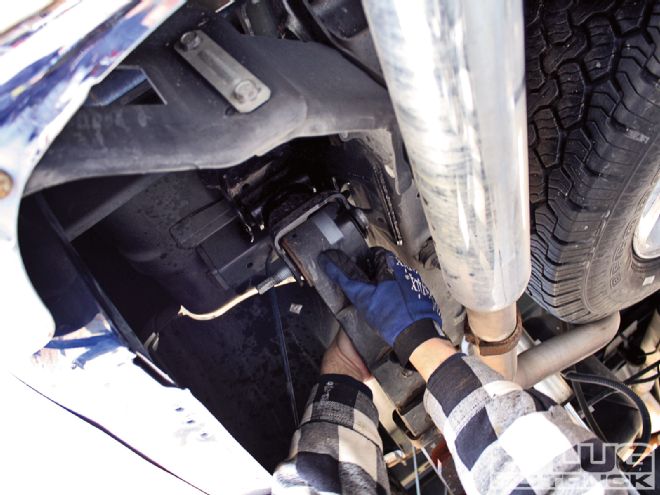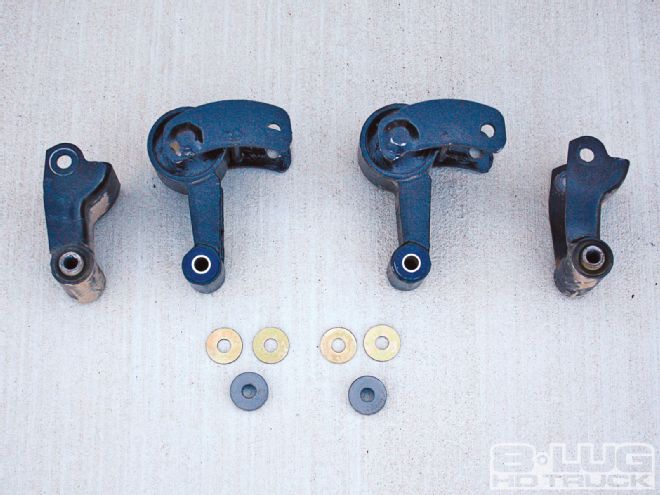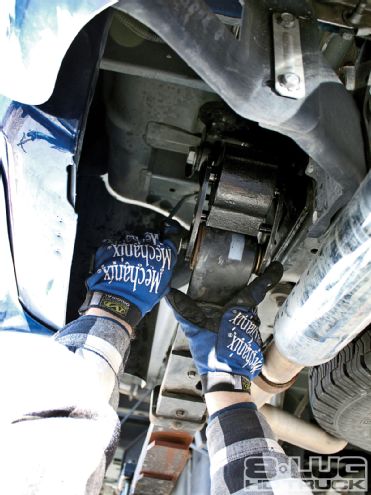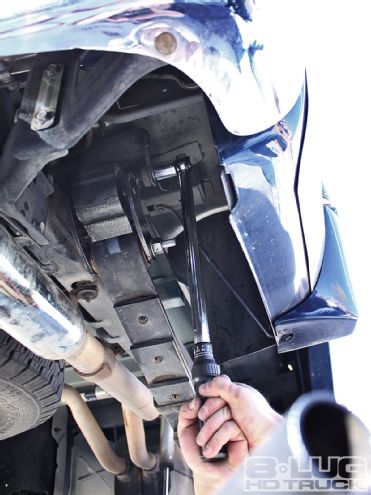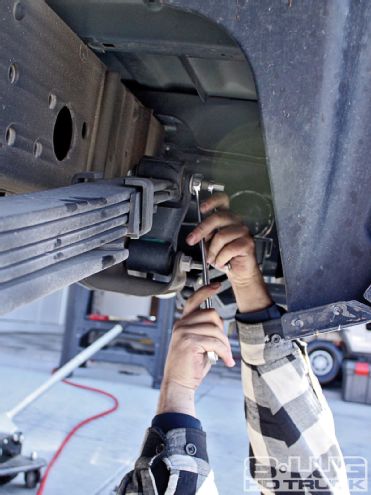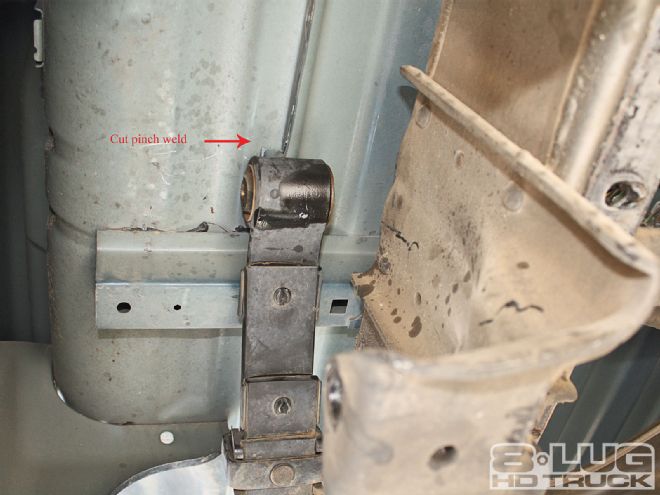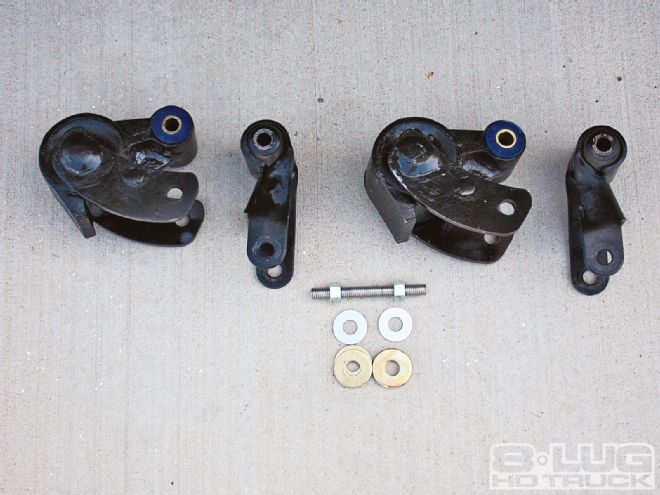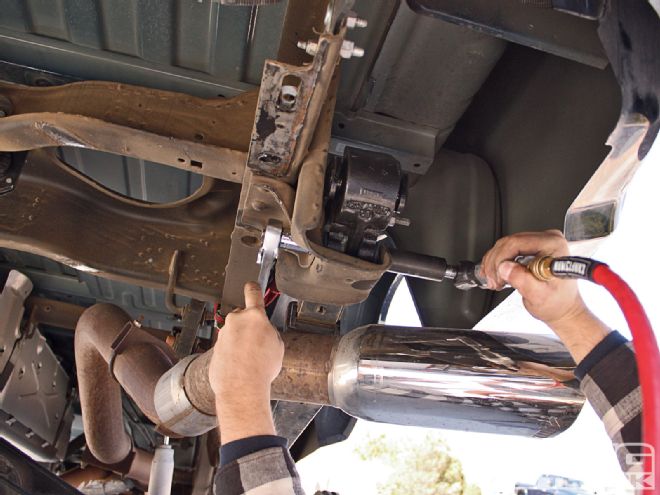Owners of 3/4- and 1-ton trucks know firsthand how harsh the ride can be in their unloaded trucks. Heck, even with a considerable load in the bed, the ride is still not exactly luxurious. Sulastic Rubber Springs to the rescue! The rubber springs from Sulastic are an elastic suspension that reduces (and in many cases completely removes) the vibration and shock caused by the leaf spring suspension, improving safety and overall handling of the vehicle. Sulastic rubber springs are designed for the specific spring rate, damping, and spring speed of each make and model of truck in order to improve ride quality. Sulastic rubber springs do not affect the load-carrying capacity of the truck, and the ride height will remain within 1/4 inch of stock height.

| Truck #1: '05 Dodge 2500 Quad Cab Hemi 4x4 with a 2-inch front lift and 1-inch rear suspension lift.
At the center of the rubber spring is the main axle, which is vulcanized to the proprietary Sulastic rubber compound and housed within a nodular cast-iron cylinder. Nodular cast-iron is stronger and considerably more flexible than aluminum and less brittle than traditional cast-iron, making it a logical choice for an automotive application such as this. The rubber is then twisted appropriately to obtain the correct dynamic characteristics for each specific truck model. The final assembly step is to weld the hot rolled steel plate brackets and stop member to the main axle.
To test the claims of a smoother ride, we installed Sulastic rubber springs on an '05 Dodge Ram 2500 Quad Cab Hemi 4x4 and an '07 Chevy Silverado 2500HD Crew Cab 4x4. This combination was chosen because of the differences between the two trucks. The Dodge has a solid front axle, a mild 2-inch lift, and a 6-foot bed, whereas the Chevy has an independent front suspension, a 6-inch suspension lift, and an 8-foot bed. Rather than only providing a seat-of-the-pants testimonial, we instrumented the trucks with three triaxial accelerometers to measure both the baseline and post installation ride performance. The accelerometers were mounted on the frame above the rear shackle, in the front of the bed (nearest the tailgate) and inside the cab on the center console. The test road consisted of light to extreme bumps to replicate highway expansion joints, railroad crossings, and potholes-each pass was made at 30 mph in both directions. The improvement in the ride quality was immediately noticed after the Sulastic rubber springs were installed. In fact, the rear leaf spring suspension augmented with the Sulastic rubber shackle of the Chevy now seems to be smoother than the independent front suspension.

| Truck #2: '07 Chevrolet 2500HD Crew Cab 4x4 with a 6-inch suspension lift.
The Sulastic rubber shackles made a positive difference in the overall ride performance of both trucks. The ride quality is reasonably improved, as evidenced empirically by the graphs and theoretical seat-of-the-pants dyno testimony. The installation of the Sulastic rubber springs won't turn your 3/4- or 1-ton truck into a high-end plush luxury automobile, but your friends and kidneys will thank you for installing them.
Certifiable Proof
The following data graphs are provided as empirical evidence to validate the declarations of improved ride quality after installation of the Sulastic rubber springs. Of the three data collection locations (frame, bed, and cab interior), the frame and cab interior locations were chosen for illustration.

